If you’ve ever come across an old, abandoned nest, you’ve probably wondered who it belongs to and whether they’ll ever come back. We were curious about the nesting habits of robins. So, we decided to ask the experts: do robins reuse their nests?
The quick answer is: no, they don’t. However, they’ve been known to build new ones on old nesting sites.
Interested in finding out more about the nesting behavior of these adorable birds? Then, keep reading.
American Robins and their Nests: A Quick Overview
American Robins are beloved icons of spring. Their red-orange potbellies and sweet-sounding calls are two of their best-known features.
They’re so well-loved that they’re the official bird for three states: Michigan, Wisconsin, and Connecticut!
These precious birds are such a treat. That’s why we wanted to learn as much as we can about them, starting with how they build their nests to how they raise their young.
Do Robins Reuse Their Nests?

On average, American Robins aren’t known for using old nests. The females simply find a safe location and start making a new one. They prefer making a new nest with each new brood, which can be exhausting for the females since robins can have up anywhere between two to four broods a year.
While they may not be known to reuse the same nest, there are instances where they build on top of old, pre-existing nest sites. Then, they remodel the broken-down nest to make it suitable for the upcoming nesting season.
How Long Does the Breeding Season Last?
Robins begin courtship in mid-January, early February. The breeding season typically starts in the middle of March, when spring rolls around.
The females will begin to lay their eggs anywhere between April and August. A female will generally have two broods, sometimes three or four, in every breeding season.
It lasts until the end of September, when temperatures start dropping. That’s when they leave their nests and migrate south where it’s warmer.
Author Note: It’s worth mentioning that some robins stay right where they are all year-round. However, they change their behavior to adapt to the cold and food scarcity.
Where Do Robins Set Up Their Nests?
Robin nests are typically bowl-shaped. They’re constructed in areas that provide adequate shelter from predators, as well as the cold and heat. This is usually in trees or bushes. Sometimes, they’ll even make their nests under the eaves of buildings.
These average-sized birds don’t like being too high up. That’s why nesting sites are located between five to 25 feet off the ground.
Being at this modest height also gives them a fair chance at protecting their young. After all, a bird’s nest basically functions as a baby incubator to protect the eggs from external factors until they’re ready to hatch.
Once the eggs hatch, the nest remains the safest place for the chicks to stay warm and dry. It’s also where they’ll stay until they fledge, which is about when they’re 14 days old.
Who Builds The Nest?

Like we said earlier, females are the only ones responsible for setting up the nest. Yet, the males will usually help out by gathering the materials.
They collect as many twigs, leaves, and dry grass as possible. They’ll also use moss, lichens, and even ribbons or string to build a strong, sturdy nest.
When they have everything they need, the females put it all together using a bit of sticky mud. The whole process can take up to four days to complete.
What Is the Size of a Robin Nest?
Typical nests are six inches across. Their walls are four to six inches high to prevent the eggs or hatchlings from sliding out. The rounded inside area of the bowl-like nest is between three and a half to four inches wide.
Nevertheless, a good robin nest should safely house four growing nestlings. Since females usually lay anywhere from two to four eggs per breeding season, this is a decent enough size for the entire family.
An American Robin’s egg is light blue and is about the size of a quarter. The female will incubate the eggs for about two weeks.
Then, when they hatch, both parents care for the young for another two weeks until they’re strong enough to leave the nest on their own.
How Do Robins Protect Their Nests?

If you come across an old nest, it’s best if you leave it alone. You don’t want to inadvertently destroy a bird’s home or get attacked by a pair of over-protective robins.
Male Robins
There’s a phenomenon known as ‘nest-site fidelity.’ It’s common among many birds, including American Robins, and tends to become more prominent during nesting season.
For example, the males can get quite aggressive if they sense a predator—yes, that includes you—is coming too close to their nest. They’re actually known for their sudden attacks on anyone who gets within 10 feet from their nest.
They’ll swoop down extremely close to your head and squawk. This fake dive-bomb technique is a basic defense mechanism meant to scare you away. It’s also designed to divert your attention away from the nest site.
Female Robins
The females can be just as territorial, but they’re more sneaky. They don’t dive-bomb intruders. Instead, they give out a series of alarm calls.
Top Tip: These calls serve two purposes. The first is to shift your focus from the nest site to the sound.
The second purpose is they act as a warning signal. The female’s calls help warn the hatchlings to duck down and still as still as they can. When the threat is eliminated, the mother robin gives another call, telling her nestlings their home is no longer in danger.
Are Robin Nests Clean?
Fun fact: nestlings poop after each feeding. Yet, surprisingly, robin nests are actually pretty clean, considering all the poop those little birds are producing.
It’s a tedious task left for mama and papa robin to deal with. However, a clean nest keeps parasites and pathogens away, which helps keep baby robins healthy and strong.
Moreover, maintaining a waste-free zone in the nest reduces the risk of unfavorable smells. Foul odors are like a calling card, inviting predators near and far to come and enjoy a tasty snack.
That’s why parents work round the clock to ensure their home is free of poop and unsightly smells. Here’s how they do it.
Author Note: Nestlings produce a fecal sac after each meal. This sac is basically a white, rolled-up bundle of excrements. Think of it as a tiny diaper for birds.
Parents take turns picking up each hatchling and lifting their rear in the air to remove the tiny diaper. Then, they carry it in their beaks and dispose of it at a safe distance away from the nest.
Should You Move a Robin Nest?

Maybe an American Robin family set up their home in your backyard, and you thought it was adorable. Then winter came around, and they all left you stuck with an abandoned nest.
Do you move it? Or do you keep it right where it is for the next nesting season?
Even though you might be tempted to move it to get rid of potential diseases and parasites, you better not. According to the Migratory Bird Treaty Act, you can’t ‘transport’ any type of nest.
So, your only option is to contact your local State Fish and Wildlife Department and let them handle it.
The main reason behind this law is to protect nests and their young. If you move a nest, a mother robin will assume a predator has attacked it. As a result, it won’t even try to look for her nest or eggs.
Even if you take the mother to the new location of the nest, she won’t recognize it as her own. Most likely, she’ll just fly away, thinking it’s some other bird’s nest.
She’ll have no qualms abandoning it along with her eggs in the process, even if they’ve hatched.
A Quick Recap
So, do robins reuse their nests? No, they don’t most of the time.
The consensus is that the females make new nests with each breeding season.
Yet, what sometimes happens is they’ll use old nesting sites as their foundation.
This gives them a bit of a head-start and gives them some reassurance that they’ve picked a nice, safe place to raise their family.
FAQ
It takes about 2 weeks for robins to grow from hatching to leaving the nest. During that time, they will grow to be around the same size as their parents. They will still be practicing their flight and strengthening the wing muscles. After they leave the nest, they will stay close to their parents for some time to learn how to be independent.
No, they generally mate for the season and may stay together for the year but they don’t mate for life.
Yes, the robins return to the general area each year but not the same nest.




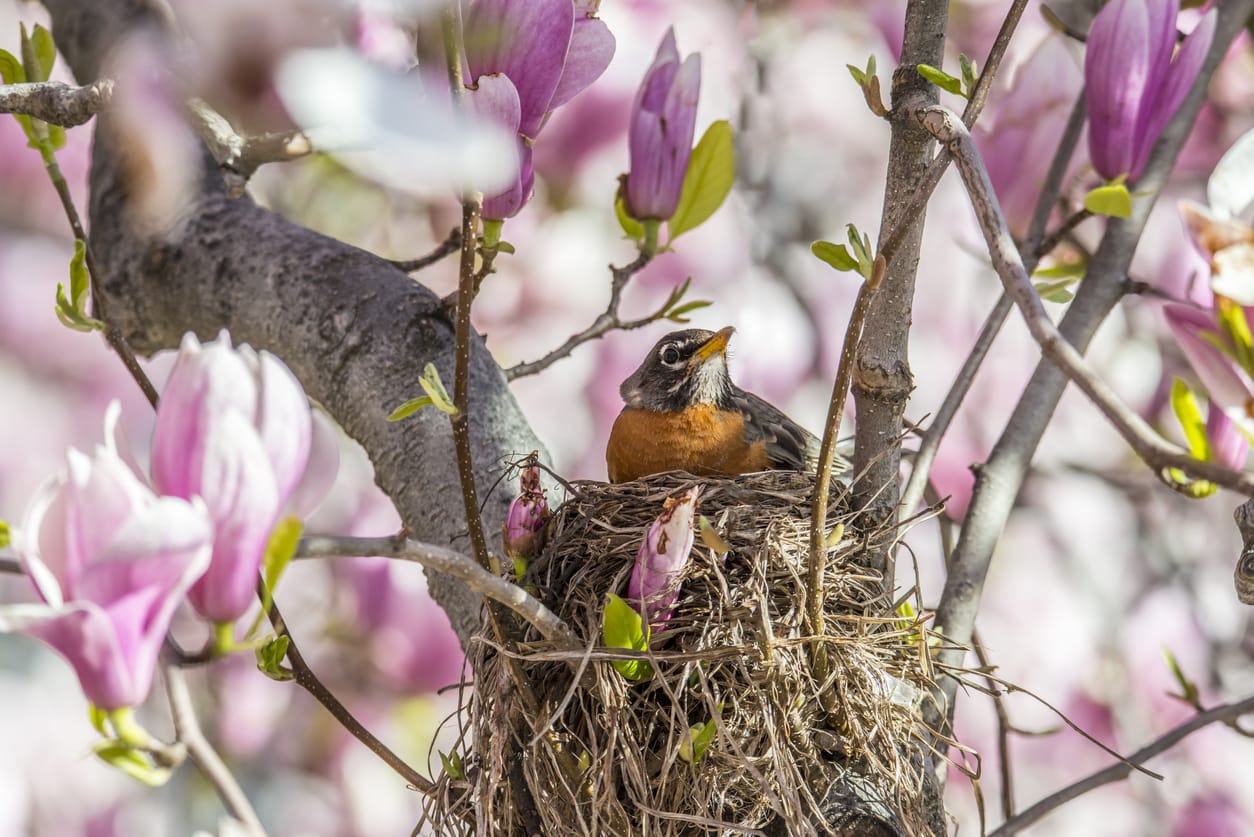
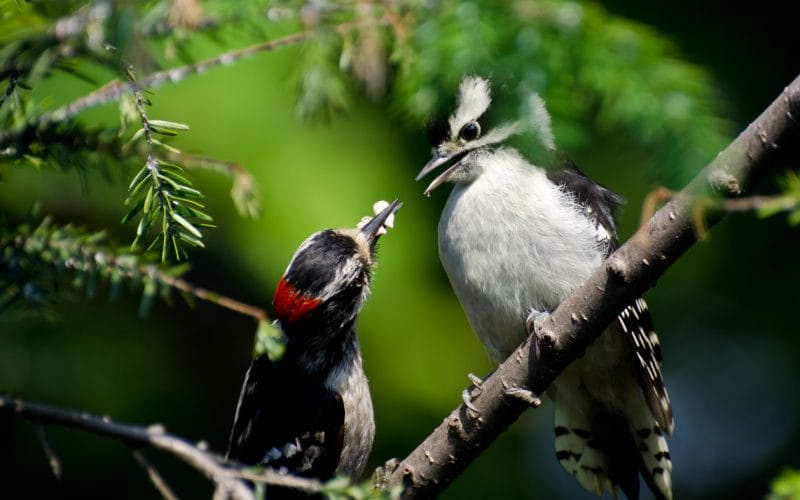
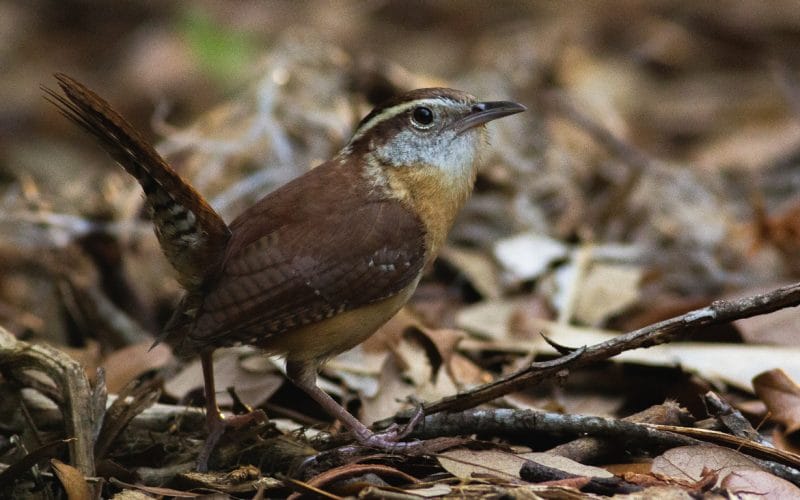
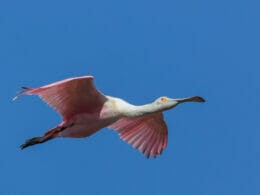
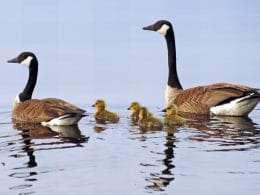
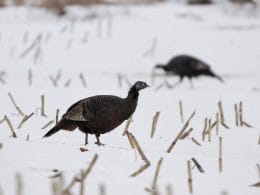
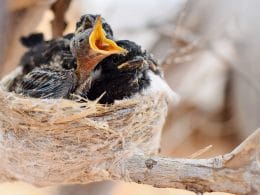
Yes they will. I have a spot in my porch rafters that they built a nest 2 years ago. As I’m unable to climb a ladder and remove it, I left it. Looked out onto my porch and saw a Robin on the railing. Looked up even higher and there sat a Robin in that old nest.
This just happened to me! I couldn’t tell that any additional construction was done, either.
I can’t tell if it’s the same robin mama or not, but I hope so. I thought I was going crazy, since other places kept saying that birds don’t reuse old nests.
do robins ever give up on a nesting sight and go else
Yes.
If the nest is attacked and robbed, the parents will leave that nest permanently and start again elsewhere.
I have a robin’s nest on my patio with four robins eggs. I found a crow at the nest this afternoon, and he had pecked at one of the eggs. When I scared him off, he almost knocked the nest to the ground. I got garden gloves and shoved the nest back to safety. The mother robin came back for a short time but I haven’t seen her in hours. Did she abandon the nest? I’m heartbroken!
The absolutely will reuse a nest. I have a nest in a cedar tree in my backyard that they have now reused twice.
They reused it last summer after a successful breeding and came back and used it again.
Just this week there are a pair of robins using it again. Don’t know if it is the same 2 robins.
Never seen that before after a winter.
I believe they do as well. We have had one outside our bathroom window for 3 seasons. Year after year Robins have 3 sets of offspring. She just laid her 3rd set of 4 this year!!
I found this site interesting.. as there is a lovely family of Robins nesting in our Porch Rafters. It’s been fun watching the babies grow and learn to fly.. my husband doesn’t like it there as there is a collection of Robin poop on the deck below.
I told my husband to leave the nest alone as the Robins are still using it and will continue to use it until the end of September.
I’ve always love all things about nature.. including Robins. Such admirable birds and family oriented to.
I noticed a nest on small wooden fence with an overhand over a month ago on back deck. 3 eggs. Watched them from window. Through cold and rain and some really windy days they all fledged over a week ago. Out of habit I still look at the nest. Well a few days ago I saw another Robin in it then nothing for a few days,figured it didn’t want to move in. Well today I looked and saw a Robin sitting on it. Went out to look when they were gone and 2 eggs layed so far! I don’t think it could possible be the same pair but one of the original parents always had it’s beak open. One of the parents of this new brood is doing same thing. Hope they make it like the last nest did!
Beginning of spring I discovered a red Robbin nest in my garden shed in an empty egg carton.
I tried to enter as little as possible to get to my garden tools not to disturb the breeding family. I looked up how long it would take and saw the hatched little ones with open mouths being feed. Then the nest seemed empty for a short time and I planned to tidy up my shed (lots of poo etc).
Now she is sitting in the same nest / same place again. Is that the next? So shortly after? When I open the shed and carefully try to get to my tools not to disturb them (the male?) flies directly towards me close to my head as you describe in your article. Problem is that I cannot get to my equipment. Any advice please?
Yes, they do reuse nests! I currently have a Robin laying her third batch of eggs in the same nest, having already produced 2 broods, with 7 fledglings successfully leaving the nest. The Robin did not build on top of the old nest, just reused the original one. We’ll see how many hatch this time around.